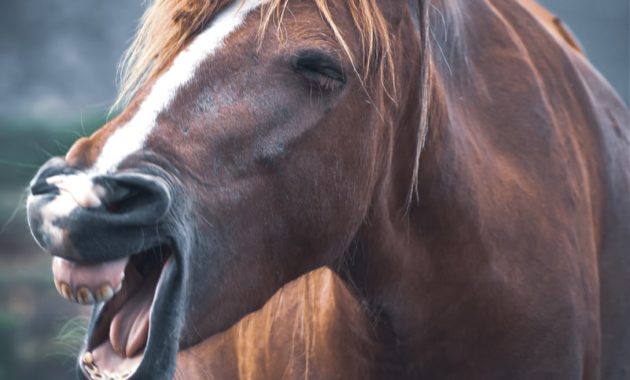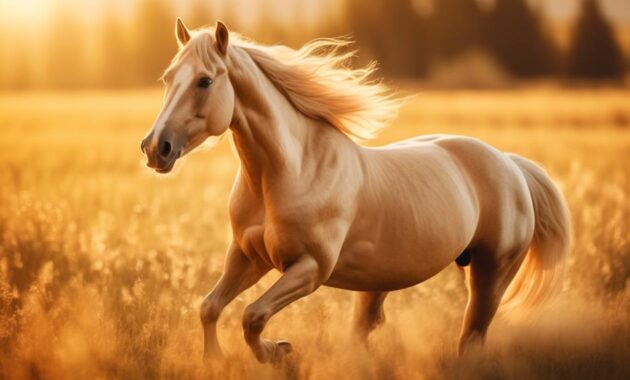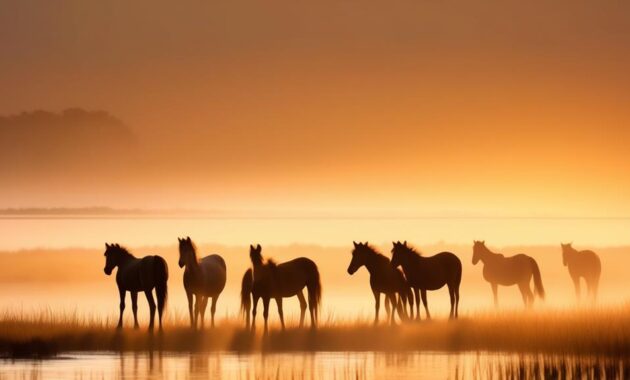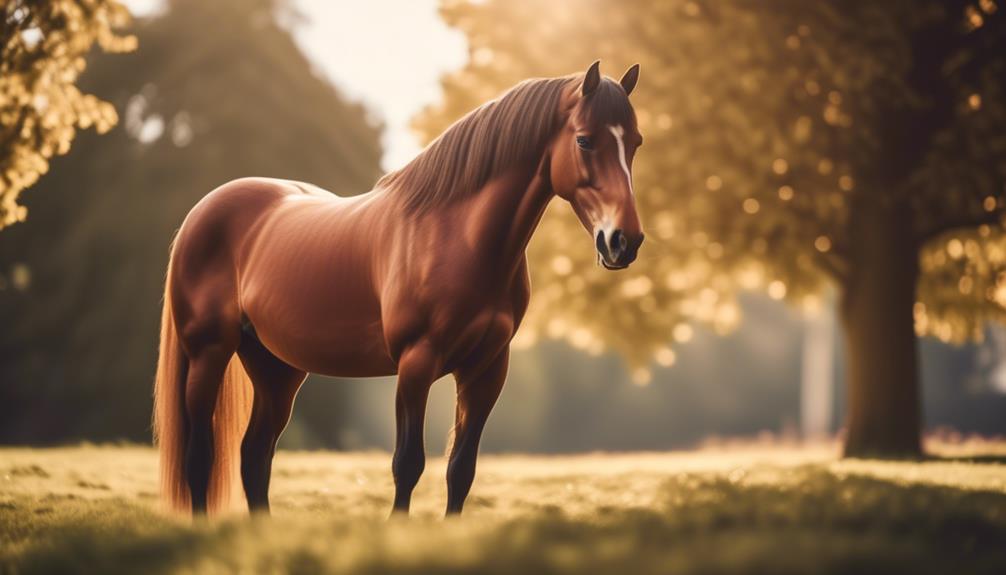
Are you aware that the Anglo-Norman Horse possesses a fascinating history that stretches across different regions and involves various breeds? This powerful and versatile equine breed has a story that will captivate your interest.
From its physical attributes to its contributions in military use, the Anglo-Norman Horse has left an indelible mark in the world of horses. But that’s just the beginning.
In this discussion, you will discover the origins and influences that shaped this remarkable breed, as well as the challenges it faced and the efforts made to preserve its legacy.
So, saddle up and join us as we uncover the captivating tale of the Anglo-Norman Horse.
Key Takeaways
- The Anglo-Norman Horse is a large, strong, and muscular breed known for its versatility and suitability for all levels of horse owners and riders.
- This breed excels in show jumping, thanks to its powerful hindquarters and strong shoulders.
- The Anglo-Norman Horse has a rich history, being developed through the crossing of various regional horses with Thoroughbred and Norfolk Roadster horses, and it has also influenced the development of other equine breeds in Asia and Europe.
- Despite experiencing a decline in demand due to mechanization in the 20th century and the impact of World War II, the Anglo-Norman Horse has made a comeback with the reopening of its studbook in the 1990s and 2000s.
Physical Characteristics and Suitability
The Anglo-Norman Horse is a powerful and versatile breed, known for its large, strong, and muscular physique. With a height ranging from 15.1 to 16.3 hands and an average weight of around 1,200 lb, these horses possess an impressive presence. Their lifespan typically ranges from 25 to 30 years.
In terms of temperament, the Anglo-Norman Horse is versatile, talented, willing, docile, and brave, making it suitable for all levels of horse owners and riders. These horses can be used for light agricultural work, riding, and equestrian sports. Their powerful hindquarters and strong shoulders make them excel in show jumping.
When it comes to color, the Anglo-Norman Horse can come in various solid equine colors, with chestnut being the most common. This breed is comparable to the Thoroughbred Horse and Oldenburg Horse in terms of its capabilities and qualities.
History and Development
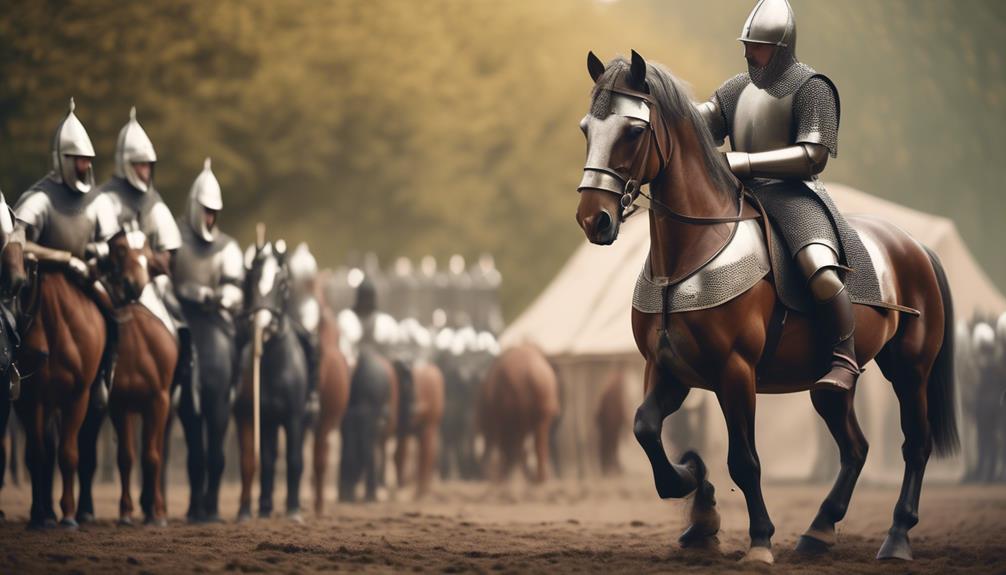
To understand the history and development of the Anglo-Norman Horse, we must explore its origins and the influences that shaped its breed. The breed was also influenced by Russian and British trotting horses. These influences led to the formation of two body types, the French Trotter horse and the Norman Cob.
The Anglo-Norman Horse was developed by crossing various regional horses with Thoroughbred and Norfolk Roadster horses. The Anglo-Norman Horse played a significant role in the military and contributed to the development and refinement of other equine breeds in Asia and Europe.
The breed association was created in 1864 due to its popularity in France. However, the demand for the Anglo-Norman Horse declined in the 20th century due to mechanization. Many horses died and breeding centers were destroyed during World War II. The studbook merged in 1958 but was later reopened in the 1990s and 2000s.
Breeding and Decline
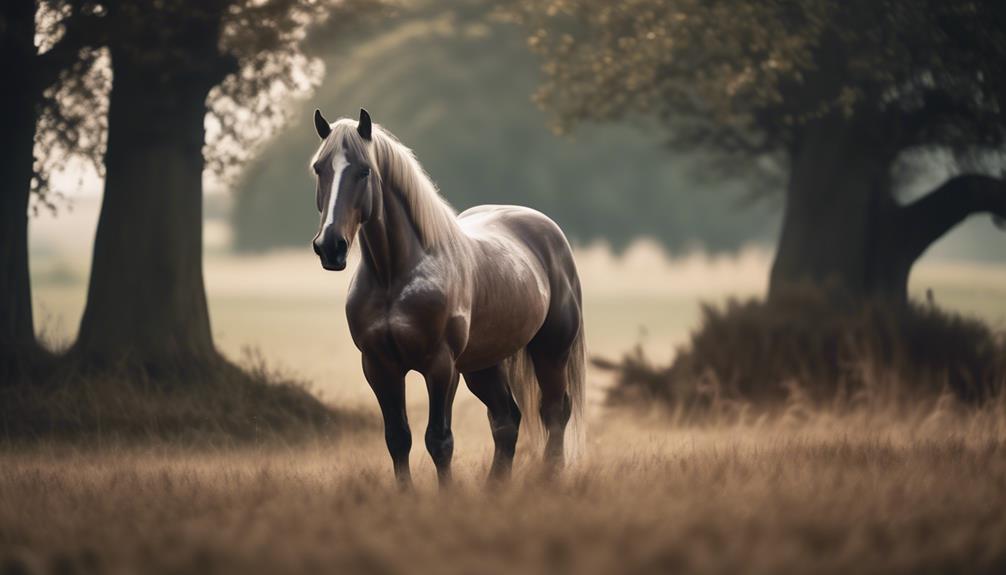
Breeding programs for the Anglo-Norman Horse were significantly improved by the latter part of the 19th century. With a renewed focus on selective breeding and enhancement, the breed association established in 1864 aimed to produce horses of exceptional quality and versatility.
However, despite these efforts, the Anglo-Norman Horse faced a decline in demand during the 20th century. The rise of mechanization in various industries reduced the need for horses in agricultural and transportation roles. Furthermore, the devastating impact of World War II resulted in the loss of many horses and the destruction of breeding centers.
Despite these challenges, the Anglo-Norman Horse persevered. The studbook merged in 1958, but was later reopened in the 1990s and 2000s, allowing for the continuation and revival of this remarkable breed.
Grooming and Care
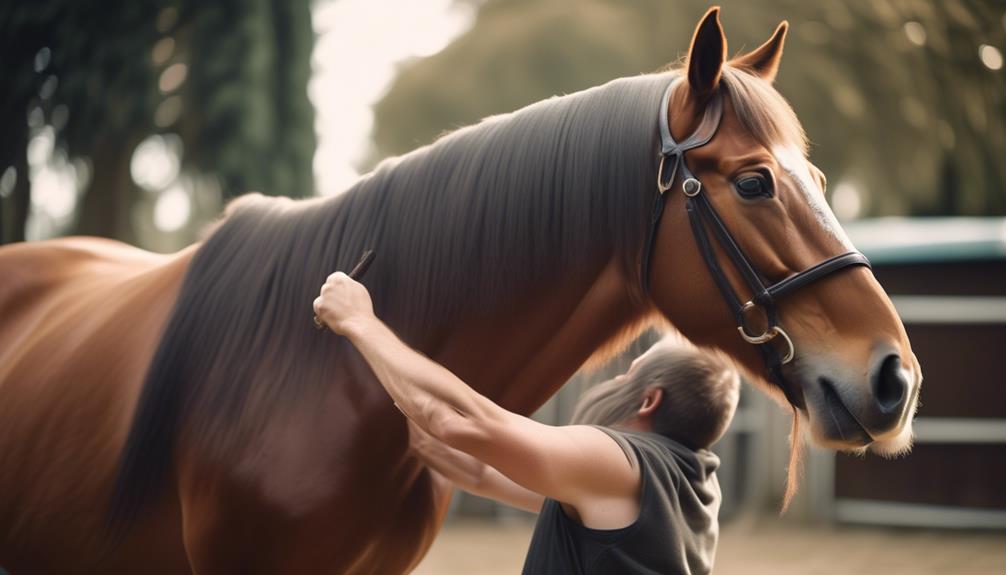
After discussing the breeding and decline of the Anglo-Norman Horse, let’s now turn our attention to the essential aspect of grooming and care for this remarkable breed. Regular grooming is highly recommended for the Anglo-Norman Horse to maintain its health and appearance. Use equine grooming tools such as a curry comb, body brush, and dandy brush to remove dirt, debris, and loose hair from the horse’s coat. Cleaning the hooves with a hoof pick is important to check for any signs of infection or injury. The mane and tail should also be cared for using a mane brush and tail brush to keep them lustrous and tangle-free. Finally, clean the remaining dirt around the horse’s ears and eyes with a soft cloth moistened with water. By following these grooming routines, you can ensure that your Anglo-Norman Horse stays in top condition and looks its best.
| Grooming Routine |
|---|
| Regular grooming routine using equine grooming tools |
| Cleaning hooves with a hoof pick |
| Brushing with a curry comb, body brush, and dandy brush |
| Mane care with a mane brush |
| Tail care with a tail brush |
| Cleaning dirt around ears and eyes with a soft cloth moistened with water |
Lifespan and Colors
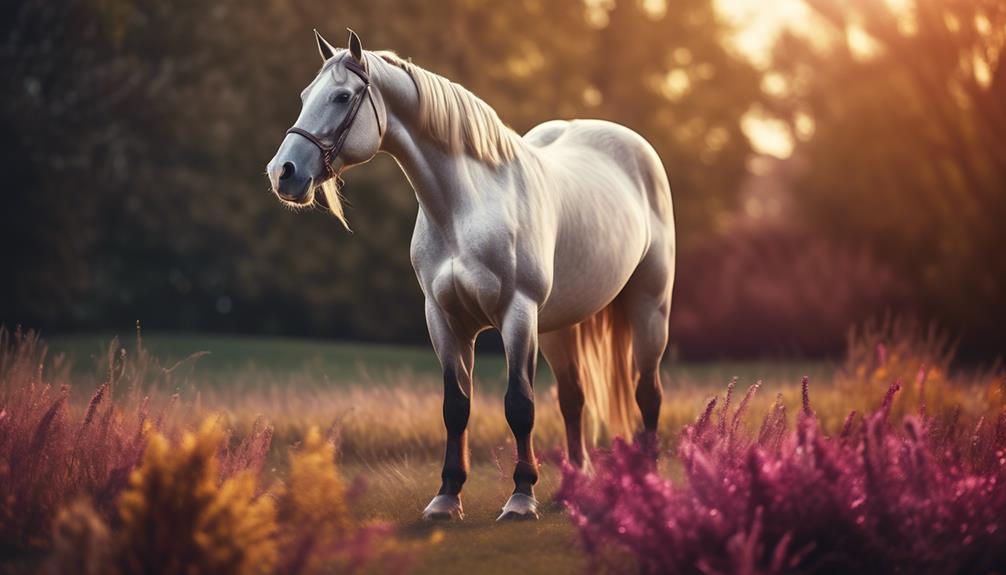
The Anglo-Norman Horse has a lifespan of typically 25-30 years, making it a long-lived and enduring breed. This impressive lifespan allows for many years of companionship and partnership with their owners.
In addition to their longevity, the Anglo-Norman Horse comes in a variety of beautiful colors. Here are three captivating colors you may find in this breed:
- Chestnut: The most common color, chestnut coats range from light to dark shades, often with a rich, reddish-brown hue. This warm color is sure to catch the eye and evoke a sense of warmth and beauty.
- Bay: Bay coats are characterized by a reddish-brown body with black points on the legs, mane, and tail. This striking combination creates a regal and elegant appearance.
- Gray: Gray coats can vary from light silver to dark charcoal. As these horses age, their coats gradually lighten, adding a touch of grace and wisdom to their appearance.
With its long lifespan and stunning array of colors, the Anglo-Norman Horse is truly a breed that captivates and enchants.
Temperament and Suitability
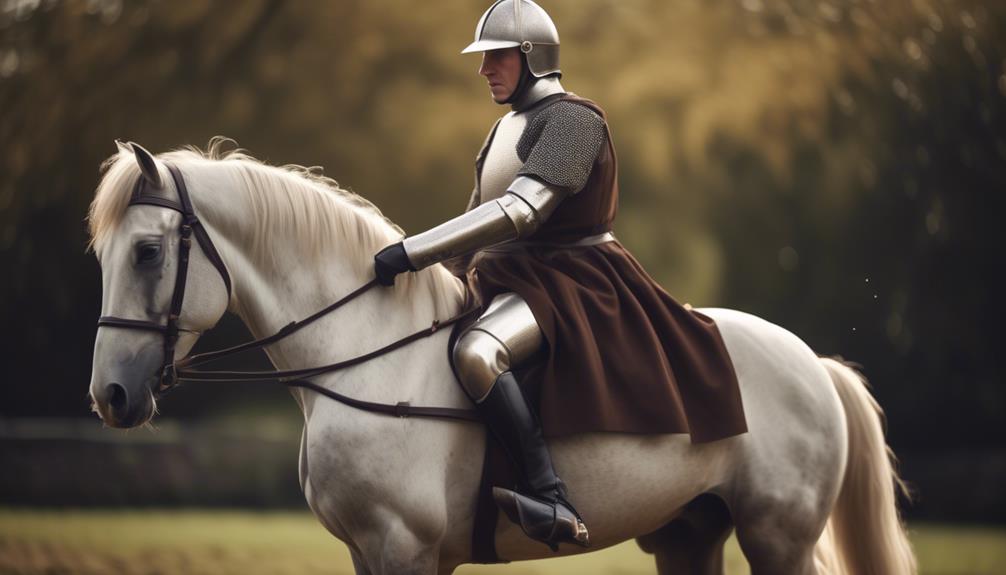
Now let’s explore the temperament and suitability of the Anglo-Norman Horse, a breed known for its versatile nature and compatibility with all levels of horse owners and riders. The Anglo-Norman Horse has a temperament that is versatile, talented, willing, docile, and brave. This makes them suitable for all levels of horse owners and riders, from beginners to experienced equestrians. They are known to be easy to handle, making them a great choice for those who are new to horse ownership. Additionally, their brave and willing nature allows them to excel in various disciplines, including light agricultural work, riding, and equestrian sports. In fact, the Anglo-Norman Horse is particularly renowned for its show jumping abilities, thanks to its powerful hindquarters and strong shoulders. Overall, the Anglo-Norman Horse’s temperament and suitability make it a fantastic choice for anyone looking for a versatile and reliable equine partner.
| Temperament | Suitability |
|---|---|
| Versatile | All levels |
| Talented | of riders |
| Willing | and owners |
| Docile | |
| Brave |
Work Capabilities and Show Jumping
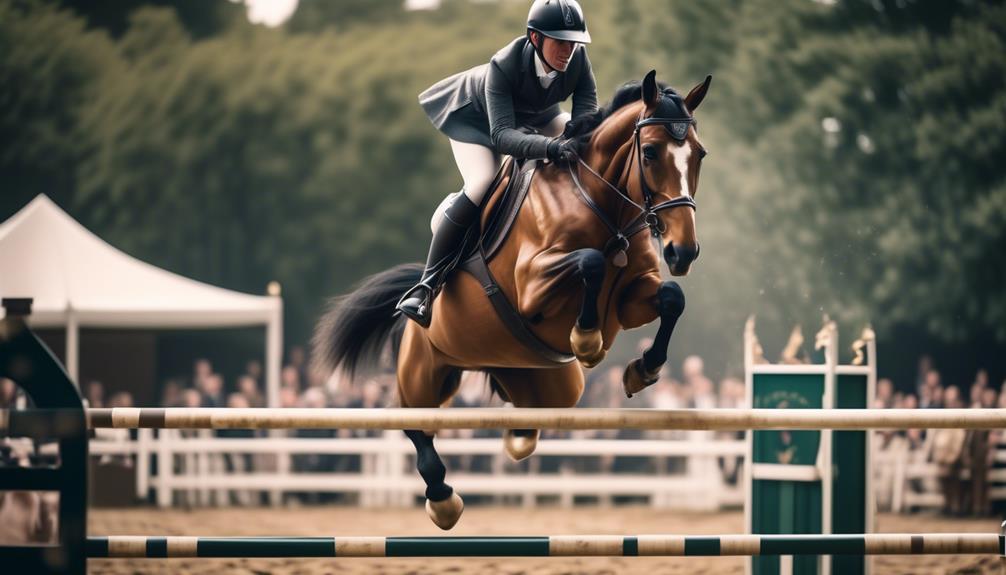
If you’re interested in the work capabilities and show jumping prowess of the Anglo-Norman Horse, you’ll be impressed by its remarkable strength and agility. Here are three reasons why the Anglo-Norman Horse excels in these areas:
- Powerful Hindquarters: The Anglo-Norman Horse possesses strong hindquarters, allowing it to generate significant power and push off the ground with force. This enables it to clear high jumps effortlessly and with grace.
- Strong Shoulders: With its well-developed shoulders, the Anglo-Norman Horse can effortlessly lift its front end, ensuring a smooth and controlled takeoff during jumps. This strength and stability contribute to its success in show jumping.
- Agility and Flexibility: The Anglo-Norman Horse is known for its agility and flexibility, enabling it to navigate complex show jumping courses with ease. Its ability to make quick turns and adjust its stride length makes it a formidable competitor in the show jumping arena.
With its combination of strength, agility, and flexibility, the Anglo-Norman Horse is truly a force to be reckoned with in the world of work capabilities and show jumping.
Comparable Breeds
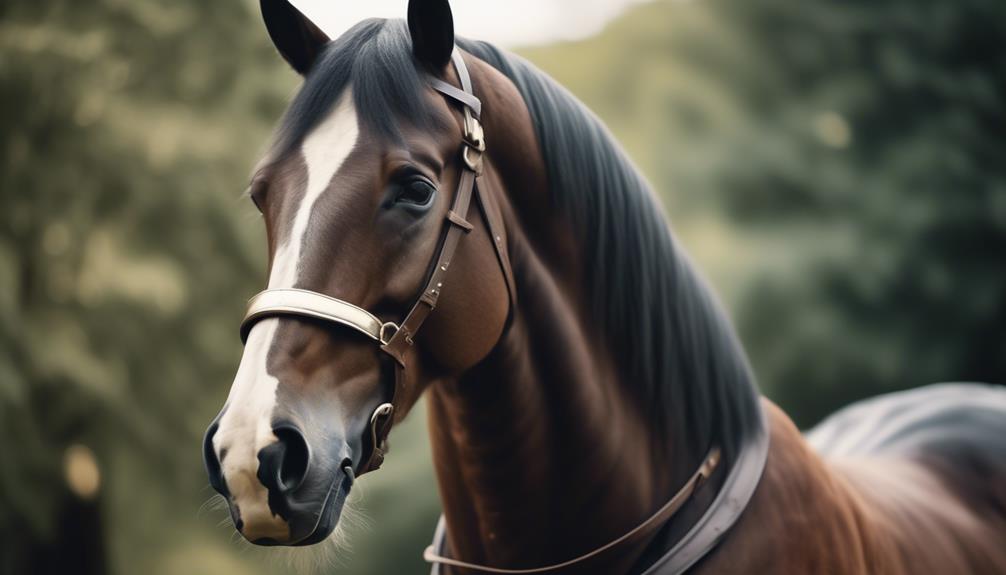
When considering other breeds similar to the Anglo-Norman Horse, you may find the Thoroughbred Horse and the Oldenburg Horse to be comparable in various aspects. These breeds share similarities in terms of their physical characteristics, temperament, and suitability for various activities.
| Anglo-Norman Horse | Thoroughbred Horse | Oldenburg Horse | |
|---|---|---|---|
| Physical | Large, strong, and muscular physique | Lean and athletic physique | Elegant and noble appearance |
| Characteristics | Versatile, talented, willing, docile, and brave | Competitive, energetic, and intelligent | Intelligent, trainable, and gentle |
| Suitability | Suitable for all levels of horse owners and riders | Primarily for experienced riders and equestrian | Suitable for dressage, jumping, and eventing |
These breeds have their own unique qualities and strengths, but they all possess the power, versatility, and athleticism that make them exceptional choices for various equestrian pursuits. Whether you are a beginner or an experienced rider, these comparable breeds can provide you with the qualities and abilities you seek in a horse partner.
Influences on Development
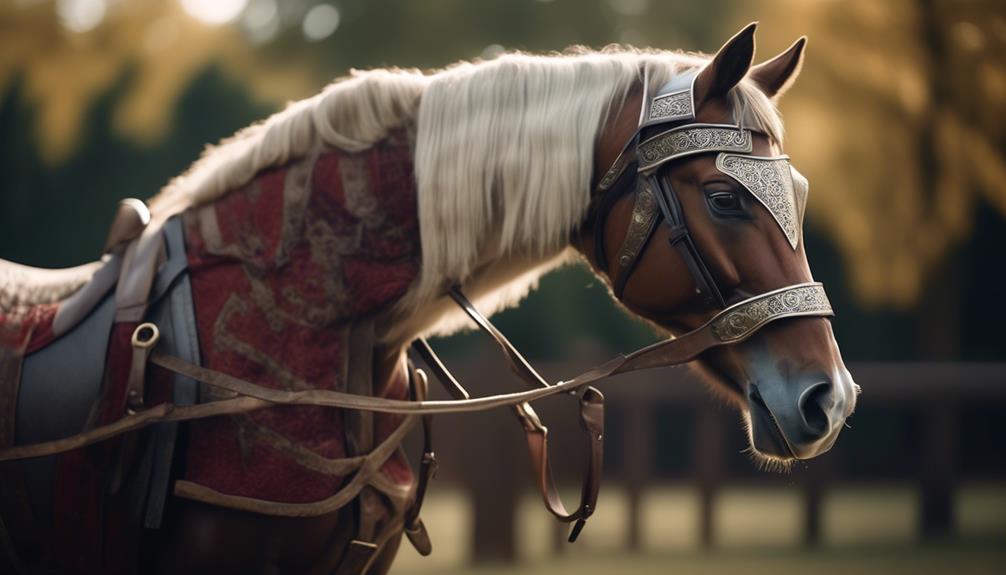
The development of the Anglo-Norman Horse was influenced by various factors, including the crossing of regional horses with Thoroughbred and Norfolk Roadster horses, as well as the influence of Russian and British trotting horses. These influences played a crucial role in shaping the breed and enhancing its characteristics.
Here are three key influences on the development of the Anglo-Norman Horse:
- Crossbreeding: The crossing of regional horses with Thoroughbred and Norfolk Roadster horses brought in traits such as speed, agility, and endurance, making the Anglo-Norman Horse versatile and adaptable.
- Russian Trotters: The influence of Russian trotting horses contributed to the development of the French Trotter horse, known for its elegant and efficient trotting gait.
- British Trotters: The influence of British trotting horses added strength and power to the breed, making the Anglo-Norman Horse suitable for various equestrian sports, including show jumping.
These influences combined to create a powerful and versatile breed that excels in multiple disciplines and has made a significant impact on the development of equine breeds worldwide.
Military Use and Contributions
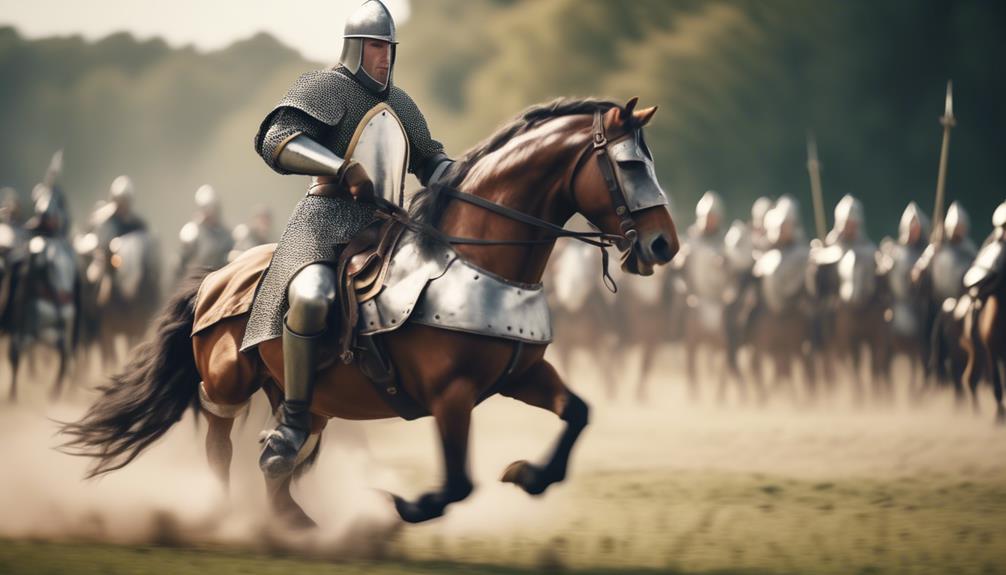
Anglo-Norman horses played a significant role in military operations and made valuable contributions during times of war. These horses were highly prized for their strength, endurance, and versatility on the battlefield. They were used by knights and soldiers for various purposes, including cavalry charges, reconnaissance missions, and transportation of supplies. The Anglo-Norman horse’s large size and powerful build made it well-suited for carrying armored knights into battle. Its docile temperament and willingness to obey commands made it a reliable and dependable mount in the chaos of war. Additionally, the Anglo-Norman horse’s contributions extended beyond the battlefield. Its breeding and refinement influenced the development of other equine breeds in Asia and Europe, leaving a lasting legacy in the world of horses.
| Military Use | Contributions |
|---|---|
| Cavalry charges | Influenced the development of other equine breeds |
| Reconnaissance missions | Left a lasting legacy in Asia and Europe |
| Supply transportation | Valued for their strength and endurance |
| Reliable and dependable mount | Played a significant role in military operations |
| Well-suited for carrying armored knights | Made valuable contributions during times of war |
Breed Association and Breeding Programs
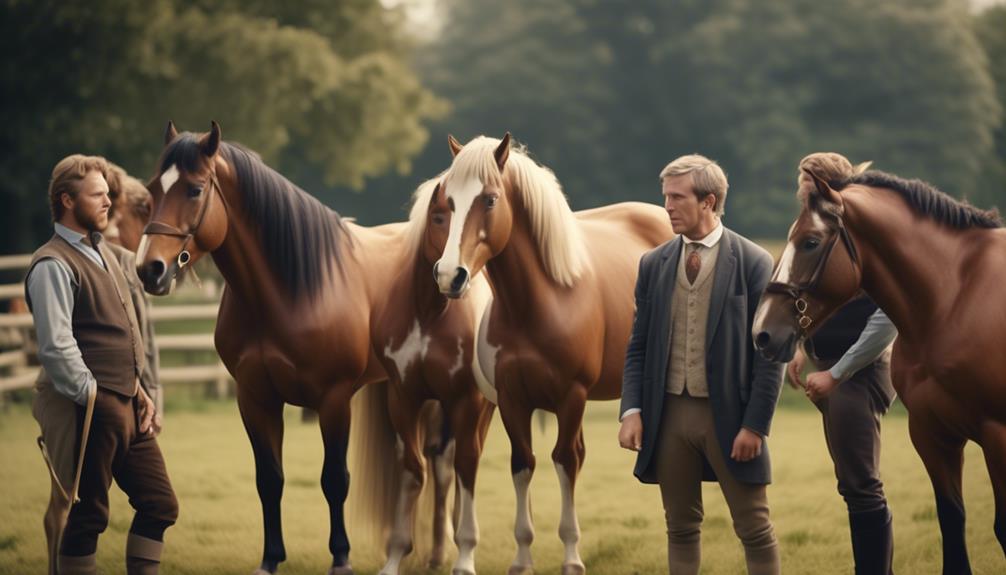
As we continue our exploration of the Anglo-Norman horse, let’s now turn our attention to the breed association and breeding programs that have played a crucial role in the preservation and improvement of this remarkable equine breed.
- Breed Association: The establishment of a breed association in 1864 helped to officially recognize and promote the Anglo-Norman horse, ensuring its continued existence and visibility in the equine world.
- Breeding Programs: The implementation of breeding programs in the latter part of the 19th century allowed for the improvement of the breed’s characteristics and overall quality, ensuring that future generations of Anglo-Norman horses would possess the desired traits.
- Preservation and Improvement: Through the efforts of the breed association and breeding programs, the Anglo-Norman horse has been preserved and improved, ensuring that this versatile and powerful equine breed continues to thrive and excel in various disciplines.
World War II and Reestablishment
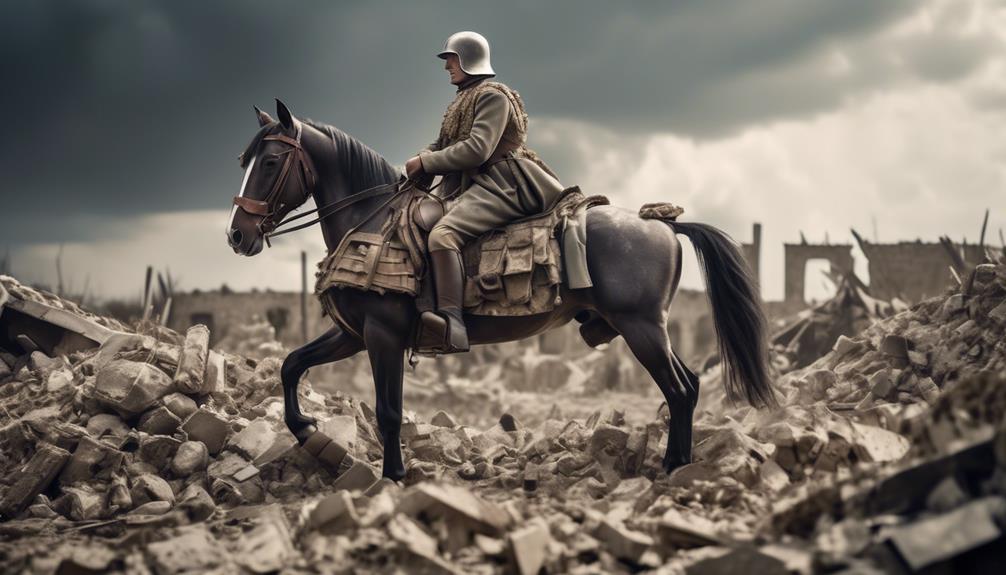
During World War II, the Anglo-Norman horse faced significant challenges and obstacles. Many horses died, and breeding centers were destroyed, causing a major setback for the breed. However, despite these hardships, efforts were made to reestablish the Anglo-Norman horse after the war. In 1958, the studbook merged, but it wasn’t until the 1990s and 2000s that the breed made a full comeback. The table below highlights the key events during this period of reestablishment:
| Year | Event |
|---|---|
| 1958 | Studbook merged |
| 1990s | Reopening of breeding programs |
| 2000s | Full reestablishment |
This table showcases the determination and resilience of those involved in preserving the Anglo-Norman horse breed. Their commitment to reviving the breed after the devastation of World War II is a testament to their love for these powerful and versatile horses.
Frequently Asked Questions
What Are the Specific Grooming Tools Recommended for the Regular Grooming Routine of an Anglo-Norman Horse?
For the regular grooming routine of an Anglo-Norman horse, you should use equine grooming tools such as a hoof pick, curry comb, body brush, dandy brush, mane brush, and tail brush.
How Often Should an Anglo-Norman Horse’s Hooves Be Checked for Signs of Infection or Injury?
You should check your Anglo-Norman horse’s hooves regularly for signs of infection or injury. It’s important to use a hoof pick to clean them and ensure their health and well-being.
Can You Provide Some Tips for Making an Anglo-Norman Horse’s Mane Lustrous and Detangling Its Tail?
To make your Anglo-Norman horse’s mane lustrous, use a mane brush. For detangling the tail, use a tail brush. Remember to groom regularly and use equine grooming tools for a healthy and well-maintained appearance.
What Are the Final Touches That Should Be Done to Clean the Remaining Dirt Around an Anglo-Norman Horse’s Ears and Eyes?
To clean the remaining dirt around an Anglo-Norman horse’s ears and eyes, gently wipe with a soft cloth moistened with water. Be careful and thorough, ensuring you remove all dirt for a clean and healthy appearance.
How Did the Anglo-Norman Horse Contribute to the Development and Refinement of Other Equine Breeds in Asia and Europe?
The Anglo-Norman Horse contributed to the development and refinement of other equine breeds in Asia and Europe through its influence on breeding programs and the improvement of horse traits and characteristics.
What Are the Key Similarities and Differences Between the Anglo-Norman and Anglo-Arabian Horse?
The power and beauty of horses can be seen in both the Anglo-Norman and Anglo-Arabian breeds. Both display grace and strength, but the key difference lies in their origins. The Anglo-Norman horse hails from Northern France, known for its sturdy build, while the Anglo-Arabian is a crossbreed with Arabian and English bloodlines, known for its speed and endurance.
Conclusion
In conclusion, the Anglo-Norman Horse is a remarkable breed that combines impressive physical attributes with a willing and docile temperament. Whether you’re looking for a horse for light agricultural work, riding, or equestrian sports, this breed excels in all areas.
Its history and development, influenced by various regional and trotting horses, make it a truly unique breed.
With proper grooming and care, the Anglo-Norman Horse will continue to captivate horse enthusiasts with its power and versatility for years to come.

